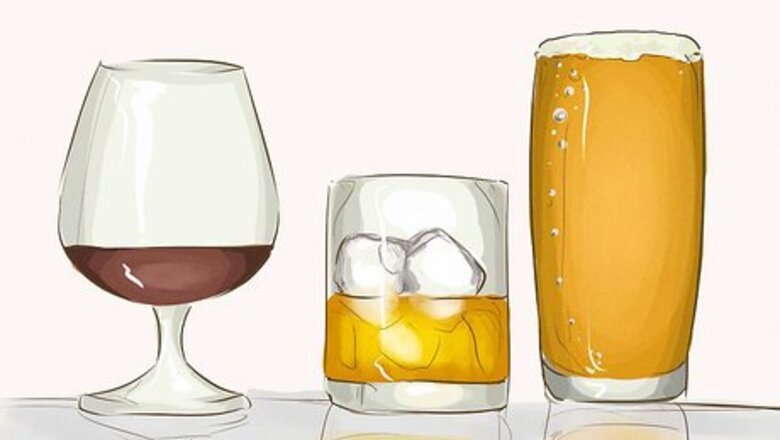
views
Checking if You’re Legally Drunk
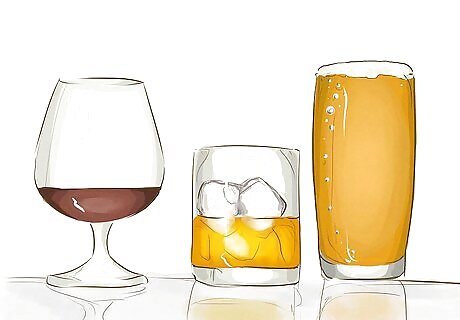
Count how many drinks you’ve had over the past few hours. Generally, it takes about 1 hour for your body to metabolize 1 serving of alcohol. Additionally, it takes your body an extra 30 minutes to metabolize each serving of alcohol beyond 3 servings. Give yourself an hour to sober up for each drink that you’ve had, plus an extra 30 minutes per serving if you’ve had more than 3 drinks. A serving size of beer is 12 fl oz (350 mL). A serving size of wine is 5 fl oz (150 mL). A serving size of malt liquor is 8 to 9 fl oz (240 to 270 mL). A serving size of distilled spirits is 1.5 fl oz (44 mL) or 1 shot.Tip: Keep in mind that it takes about 15-45 minutes to feel the effects of alcohol. You might feel okay now, but that doesn’t mean the drink isn’t going to hit you.

Use an online calculator to find out if you’re legally drunk. Open an online calculator, then enter how much alcohol you’ve had, your weight, and how long you’ve been drinking. The calculator will estimate your blood alcohol content (BAC). Based on this number, you’ll know if you’re legally drunk. If you're legally drunk, don't try to walk or drive home. Instead, stay where you are, call for a ride, or ask a friend for help.Tip: The legal blood alcohol content in the United States is 0.08%. However, keep in mind that you may be charged with driving while intoxicated or driving under the influence if your blood alcohol content is above 0.0%, especially if you’re in an accident.
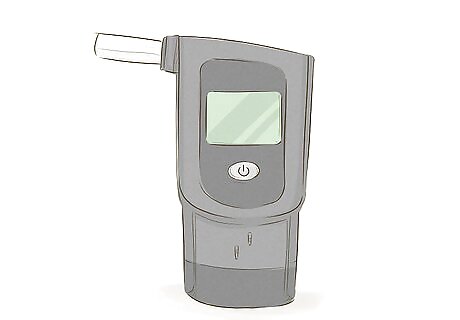
Use a breathalyzer if one is available. Breathalyzers are small devices that check your BAC. To use it, place your lips around the mouthpiece and blow into the device. It will then display your BAC reading. This will help you conclude if you’re legally drunk. Don't take a big swig of alcohol before using the breathalyzer because it will alter the results.
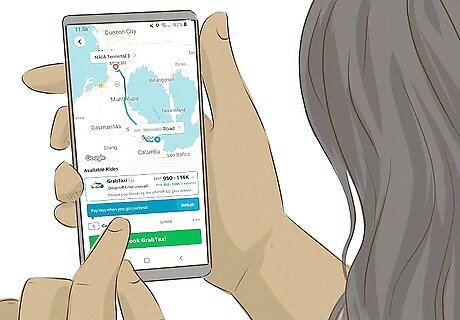
Get a ride home if you suspect you're drunk. If you think you might be drunk, you probably are. Don't try to operate a vehicle until you're sober. Instead, order an Uber or a Lyft to get you home. Alternatively, ask a sober friend to drive you or call someone to come get you. If you're buzzed, you're drunk. Buzzed driving is the same as drunk driving. Please don't risk your life and the lives of others by trying to drive.
Doing a Field Sobriety Test

Do the "touch the nose" test for an easy option. Close your eyes and extend your arm in front of you with your forefinger pointed. Then, bend your arm at the elbow and bring your finger toward your nose. Try to touch the tip of your nose with your forefinger without opening your eyes. If you miss your nose, you may be drunk. This test doesn’t guarantee that you’re drunk. Some people struggle to touch their noses even when they’re sober.
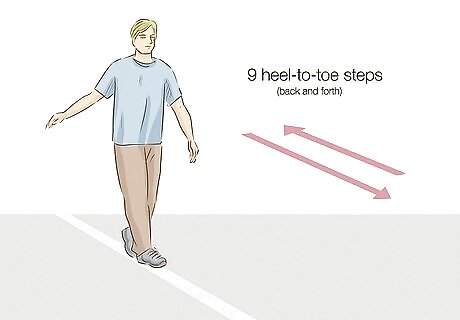
Perform the “walk and turn” test. Stand up straight, then take 9 heel-to-toe steps in a straight line. Turn on 1 foot, then take another 9 heel-to-toe steps back to your starting point. You might be drunk if you had trouble lining up your steps, needed your arms to balance, felt wobbly, or fell over. If you normally have poor balance, it’s possible that you aren’t drunk. It’s best to perform this test on a straight line that’s printed on the floor or ground. This helps you make sure that you’re walking in a straight line. Keep in mind that this test is only 66% accurate—some drunk individuals might be able to pass this test without any issues.
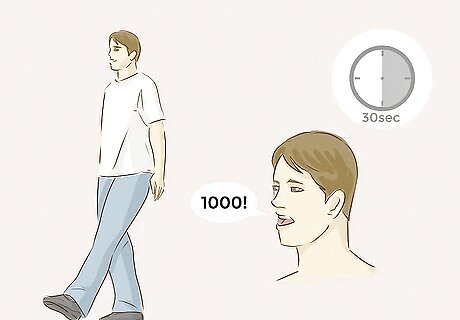
Do the "one-legged stand" test. Stand up straight, then lift 1 leg 6 in (15 cm) off the ground. Count out loud starting at 1,000. Hold this position for 30 seconds to see if you’re drunk. You may be intoxicated if you sway, put your foot down, hop, or use your arms for balance. Like with the “walk and turn” test, you might have trouble doing this test while you’re sober if you have poor coordination. Keep this in mind when you’re trying to figure out if you’re drunk. As is the case with other sobriety tests, the “one-legged stand” test only nets a 65% accuracy rate and is not an infallible way to tell if you’re drunk/sober.
Checking for Physical Signs You're Drunk
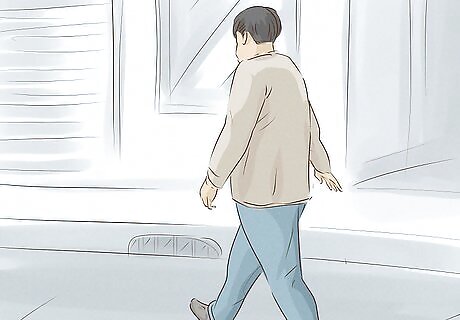
Stand up and walk around to see if you feel unstable. Take a few steps and see if you feel woozy. Then, check if you can walk straight and maintain your balance without swaying. You may be drunk if you’re feeling disoriented, can’t walk straight, or the room feels like it’s moving. You might feel like everything is hard right now. For instance, walking to the bathroom and relieving yourself might feel difficult right now. That’s a sign that you’re drunk. If you're feeling unsteady on your feet, stay seated or ask a friend to support you while you're walking. It's possible to accidentally hurt yourself, and your safety is very important.

See if you can stay focused on a task or conversation. Alcohol affects your concentration, so it’ll be really hard to focus. Try to tell your friend a story or to read something on your phone. If your mind keeps wandering or you forget what you’re doing, it’s likely that you are drunk. Try retracing your steps over the course of the night. Do you remember everything that happened? Can you give specific details? Are you keeping good track of time? If anything is unclear right now, you’re probably drunk. Ask a friend or someone you trust for help if you need it. For example, if you're having trouble paying your tab, ask a friend to help you take care of it.

Rest if you feel nauseous or start vomiting. It’s normal to experience nausea when you’re drunk, which can range from mild to severe. If you drink a lot of alcohol, you might even throw up. Sit down and take a break if you start to feel sick. If you don’t feel nauseous, it doesn’t mean you aren’t drunk. Drink some water to help you avoid dehydration. This might help you start to feel better.
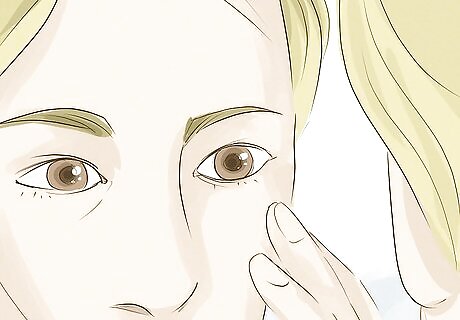
Look in the mirror to see if your pupils are enlarged. It’s common for your pupils to dilate when you’re drunk, so you’ll likely notice that your pupils cover most of your iris. Go to the bathroom or use a pocket mirror to see if your pupils look really big. You can also ask a friend if your pupils look wide. Say, “Are my pupils really dilated?”
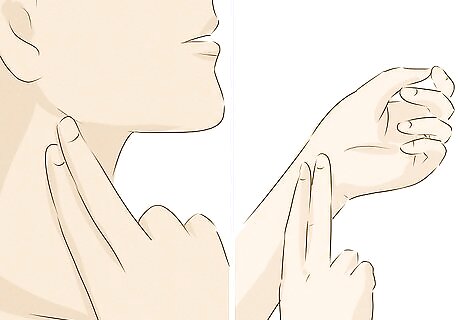
Check your pulse to see if it’s racing. When you’re drunk, your heart beats fast but you’ll breathe slowly because alcohol is a depressant. Place your right forefinger and middle finger over your left wrist to check your pulse. Alternatively, place your forefinger and middle finger over the side of your neck to feel your pulse. If it feels fast, it might be racing. If you can, ask someone else to check your pulse on your wrist. If your pulse is racing, sit down and ask a friend for help. Drink a lot of water and consider eating a small snack to help you sober up faster.
Recognizing Emotional Signs You're Drunk

Ask your friends if you're showing off. Being drunk can make you feel overconfident. When your inhibitions are lowered, you might feel like you can’t fail. This might make you want to show everyone your dance moves or a special talent. Similarly, it might make you feel confident enough to ask someone out or confess your feelings. As an example, you might decide to dance when you normally don’t or you may show off your karaoke skills even though you’re usually too shy. It's okay to have fun, but don't risk your safety. Check in with your friends to make sure you're not putting your safety in jeopardy. For instance, doing karaoke may be fun and safe, but dancing on a bar might be dangerous if you're drunk.
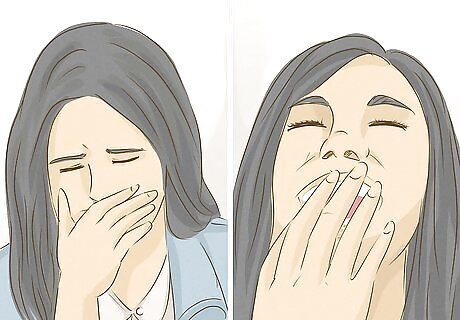
Notice if you’re laughing or crying a lot. Consider if you’re feeling extremely happy, excited, or depressed. Similarly, watch for signs of mood swings, like feeling happy 1 minute and sad the next. It’s common to feel emotional when you’re drunk. For instance, you might be dancing with your friends thinking this is the best night of your life, then suddenly crying about something that happened last year. Turn off your cell phone or ask a friend to hold onto it if you're feeling tempted to text people about things that happened in the past. For instance, if you're considering confronting your ex, give your phone to your friend.
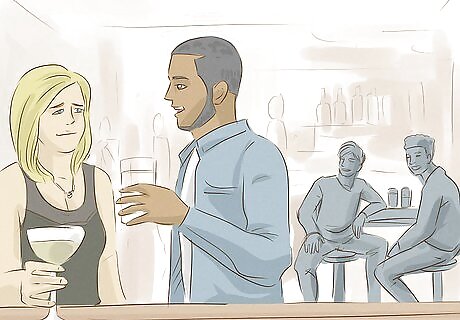
Check if you're talking to a lot of people you don't know. Alcohol lowers your inhibitions, so you feel bolder than usual. This often makes you friendlier than normal, so you may feel more comfortable talking to people you just met. Consider if you’re sharing secrets with people you don’t know or becoming instant friends with the people around you. For instance, you might catch yourself telling a stranger about your family. Try to stick closely to your friends or someone you know so that you stay safe.
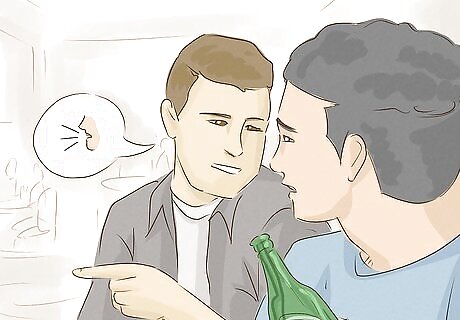
Listen for complaints that you’re loud or slurring your speech. When you’re drunk, it’s normal to talk more loudly than usual, though you likely won’t notice this. However, people around you may ask you to lower your voice or they might cover their ears. Similarly, it’s hard to speak clearly when you’re drunk, so people might ask you to repeat yourself or may respond with “what?” People might say, “You’re being too loud,” “Lower your voice,” or “What are you trying to say?” If people are complaining that you're being loud, try communicating in a whisper until you feel less drunk.

















Comments
0 comment